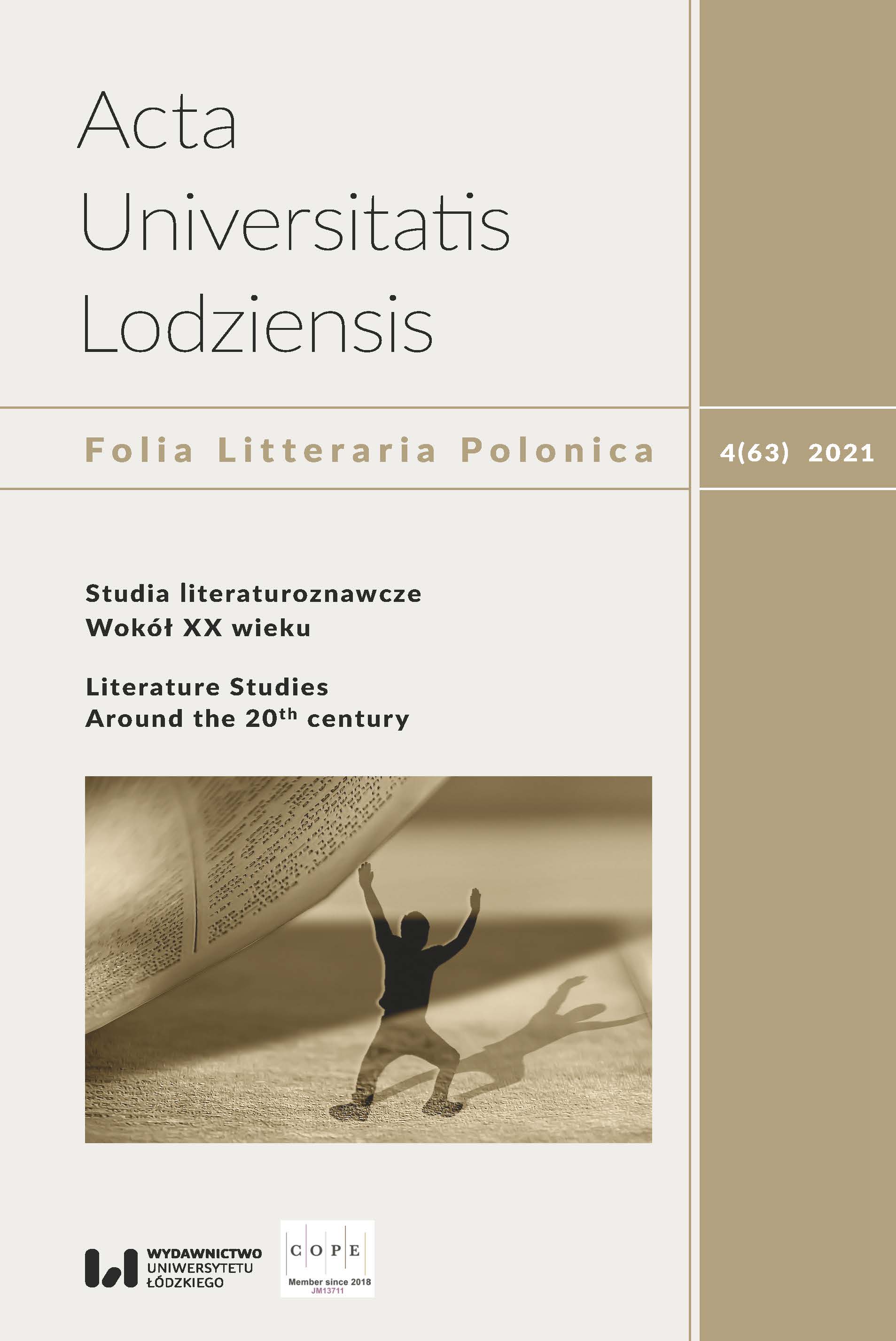Historia pewnego plagiatu: Jan Teodor Grzechota Białe niewolnice
The Story of a Certain Plagiarism: Białe Niewolnice by Jan Teodor Grzechota
Author(s): Karolina KołodziejSubject(s): Studies of Literature, Novel
Published by: Wydawnictwo Uniwersytetu Łódzkiego
Keywords: plagiarism; Polish novel; Mieczysław Braun; Jan Teodor Grzechota
Summary/Abstract: On 1 July, 1926, Express Wieczorny Ilustrowany [The Illustrated Evening Express] began printing the episodic novel Białe niewolnice [White Female Slaves] by Jan Teodor Grzechota. Twelve days later, the newspaper published an article in which it informed that the printing of the novel was suspended, because the work turned out to be a plagiarism of a novel with the same title by the Scandinavian writer Elizabeth Schoyen. The Jan Teodor Grzechota pseudonym stood for a well-known Łódź-based poet – Mieczysław Braun (Aleksander Mieczysław Bronsztejn). The subject of the plagiarism was an extremely popular novel, whose numerous trans- lations appeared in Polish in separate book editions several times in the 1920s and 1930s. The popularity of the motif of human trafficking might have proved itself, as the motif was also used at that time by Polish and European cinematography and theatre. A careful analysis of both works shows that Brown copied the content of Shonyen’s novel almost exactly, i.e. the plot, the characters, and the details. The Polish writer added several initial episodes of the novel in order to set the plot in the reality of Lodz, which was one of the determinants of the poetics of the seg- mental novel. It is probable that the only punishment Braun suffered was public critique of his shameful act, since copyright regulations were not yet in place.
Journal: Acta Universitatis Lodziensis. Folia Litteraria Polonica
- Issue Year: 63/2021
- Issue No: 4
- Page Range: 93-110
- Page Count: 18
- Language: Polish

